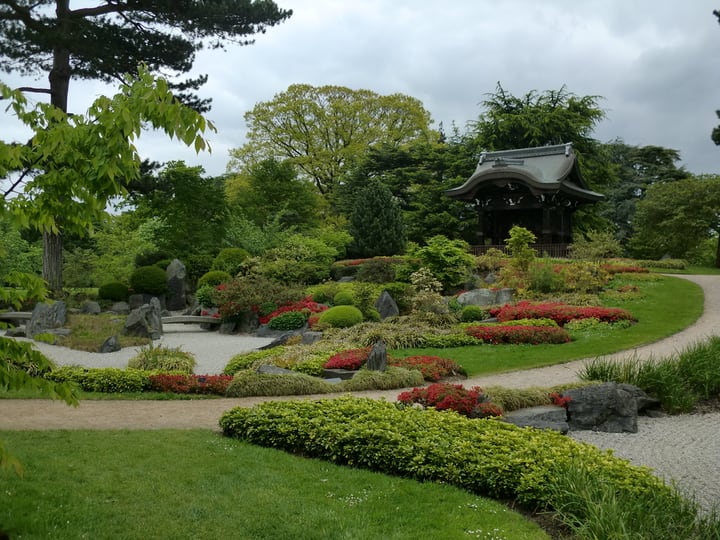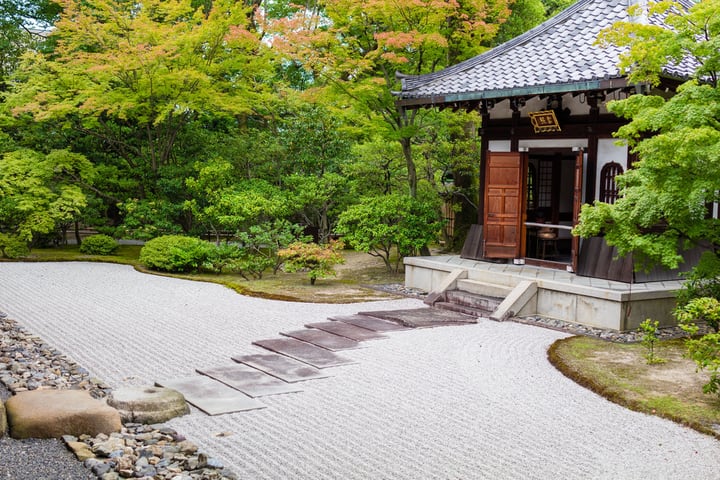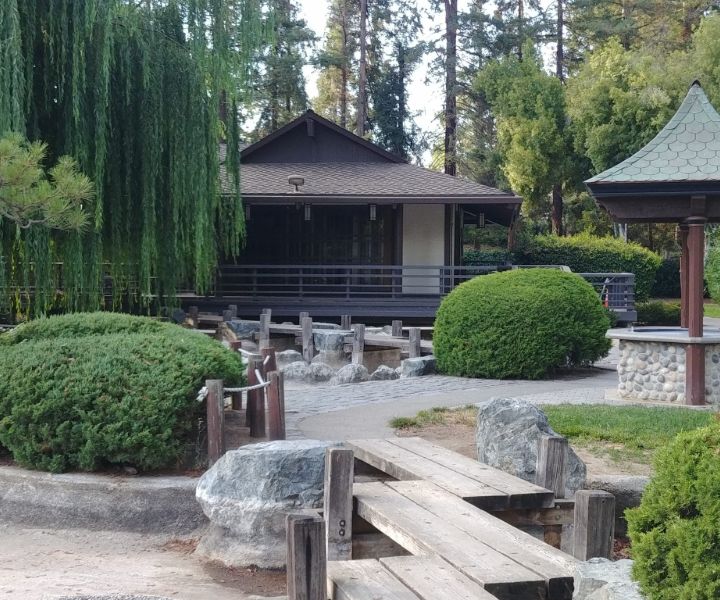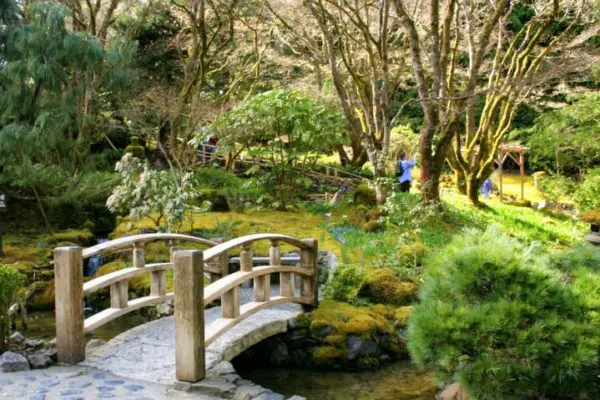
Japanese gardens are known for their tranquil beauty, blending natural elements in a way that inspires calm and reflection. These gardens are designed to evoke a deep connection with nature and provide a peaceful space for meditation and relaxation. If you’re looking to create a Japanese-style garden of your own, whether in your backyard or even indoors, here are some ideas to inspire you.
What Makes Japanese Gardens Special?

Japanese gardens stand out from most other garden styles due to their unique design and aesthetic principles. Their beauty comes from simplicity, natural textures, and careful attention to detail. Here’s what makes them different:
- Purpose: Japanese gardens are all about creating a sense of oneness with nature. Their minimalistic design helps calm the mind and body, making them ideal for reflection and meditation.
- Design: Unlike Western gardens, Japanese gardens often feature asymmetry rather than symmetry, reflecting the natural world’s imperfect beauty.
- Features: These gardens incorporate various elements like rocks, water, plants, and moss to recreate miniature landscapes. Common features include stone lanterns, bridges, ponds, and pathways.
Creative Japanese Garden Ideas

Japanese gardens are both traditional and modern, with various styles to suit different spaces. Whether you’re designing a Zen garden, a friendship garden, or just a peaceful nook, here are some inspiring ideas for your space.
Zen Gardens
Zen gardens, also known as dry gardens, are characterized by sand, gravel, and rocks arranged to create calming landscapes. These gardens are perfect for relaxation and reconnecting with your inner Zen.
- Sand Ocean Zen Garden
- Dry River Landscape
- Add a bit of Zen to a small space by creating a dry river. Use gravel or sand to mimic the flow of water, and add rocks to represent mountains. It’s a metaphor for life’s journey, from start to finish.
- Bamboo Fence Zen Garden
- Bamboo fences are a staple of Japanese gardens, offering a natural look. Use bamboo to create a fence around your Zen garden, bringing an eco-friendly and serene vibe to your space.
- Wabi-Sabi Zen Garden
- Inspired by the Japanese aesthetic of wabi-sabi, which celebrates the beauty of imperfection, create a garden with natural, incomplete elements. For example, let dry leaves rest under a tree rather than cleaning them away.
- White Raked Sand Garden
- Rake white sand into patterns that mimic water, such as waves or a river. Add rocks and plants for extra texture and dimension, creating a peaceful and visually pleasing space.
Friendship Gardens

Friendship gardens combine the beauty of Japanese gardens with elements from other cultures, making them perfect for people who love both simplicity and cultural diversity.
- Weeping Willow Friendship Garden
- Transform your backyard with a weeping willow tree at the center. Surround it with gravel, stones, and shrubs to create a peaceful and reflective space. A bench beneath the tree makes the perfect spot for contemplation.
- Koi Pond Friendship Garden
- A koi pond symbolizes good fortune and strength. Even in a small garden, you can create a relaxing space for koi by adding rocks, pebbles, and shrubs along the pond’s edge. It’s a serene addition to any garden.
- Green Strolling Friendship Garden
- If you love greenery, a minimalistic lawn with a gravel path running through it is a great option. This garden invites you to take a leisurely stroll while appreciating the beauty of nature.
Friendship Garden FAQs
1. What type of tree is ideal for a Friendship Garden?
Trees like Weeping Willows and Japanese Maples are great choices for a Friendship Garden. The weeping willow adds a sense of tranquility with its drooping branches, while Japanese maples bring color and beauty. Fruit trees like apple or cherry also add symbolism of abundance and growth.
2. How can I create a peaceful and reflective atmosphere in my garden?
To create a peaceful and reflective atmosphere:
- Add a central tree, like a weeping willow or an oak, to provide shade and serenity.
- Use natural materials such as gravel, stones, and wooden benches for a rustic feel.
- Incorporate water elements like a koi pond or small fountain to bring soothing sounds to the space.
- Surround the space with greenery to create a calming, enclosed feeling.
3. How do I take care of a Weeping Willow tree in my garden?
Weeping willows are relatively easy to care for, but they do require specific conditions:
- Plant them in moist, well-drained soil and ensure they have enough space to grow.
- Water regularly, as they thrive in wet conditions.
- Prune regularly to maintain their shape and remove dead or damaged branches.
- Ensure plenty of sunlight for optimal growth.
4. What size should a koi pond be for a small garden?
For a small garden, a koi pond should be at least 3 feet deep to allow koi to thrive. The surface area should be large enough to accommodate the fish, with plenty of space for them to swim. Consider adding natural elements like rocks, pebbles, and water plants to create a natural habitat for the koi.
5. Can I create a Friendship Garden in a small space?
Yes! Even in small gardens, you can incorporate elements like a miniature koi pond, a small central tree, or a gravel path to create the essence of a Friendship Garden. The key is to use compact designs and select elements that make the space feel open and inviting without overcrowding it.
6. What are the benefits of a Friendship Garden?
A Friendship Garden provides numerous benefits:
- Mental relaxation: The peaceful atmosphere promotes calmness and contemplation.
- Increased social bonding: The space creates a welcoming environment for friends and family to gather.
- Aesthetic beauty: Incorporating nature’s elements, such as trees, water, and greenery, enhances your garden’s visual appeal.
- Connection to nature: A Friendship Garden encourages a deeper connection to the environment and fosters mindfulness.
7. How do I choose the right plants for my Friendship Garden?
Opt for plants that are low-maintenance and provide both beauty and tranquility. Some great options include:
- Shrubs and bushes like lavender, jasmine, or boxwood for structure and fragrance.
- Water plants such as water lilies or lotus for koi ponds.
- Perennials like hostas or daylilies to add color year-round.
- Ground cover plants like moss or creeping thyme for a soft, green layer.
8. Should I include seating in a Friendship Garden?
Yes! Adding seating, such as a bench or a small sitting area, provides the perfect spot for reflection and conversation. Place it under a tree, like a weeping willow, or near your koi pond to create an inviting area for relaxation with friends or family.
9. How do I maintain the aesthetics of a Friendship Garden?
Regular maintenance is key to keeping the space looking beautiful:
- Trim plants to keep them healthy and maintain their shape.
- Clean the pond to prevent algae build-up and ensure clear water.
- Add mulch around trees and plants to retain moisture and suppress weeds.
- Fertilize periodically to promote healthy growth, especially for flowering or fruit-bearing plants.
10. What’s the best way to incorporate a Friendship Garden into my home?
Incorporate the Friendship Garden into your home by creating a seamless connection between your indoor and outdoor spaces. Large windows, sliding doors, or French doors can help bring the natural beauty of your garden into your living area. Additionally, a few small indoor plants can complement the outdoor garden for a cohesive aesthetic.
Conclusion
Creating a Friendship Garden offers a unique way to transform your outdoor space into a serene retreat that fosters reflection, connection, and peace. Whether you choose a weeping willow garden, a koi pond, or a green strolling path, each element contributes to the harmonious ambiance. With a bit of creativity and planning, you can craft a space that invites relaxation, joy, and quality time with friends and family. Your garden can be a sanctuary for both you and those you cherish, providing a beautiful backdrop for meaningful moments.

